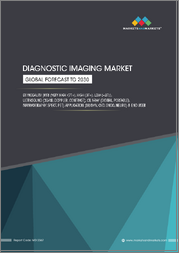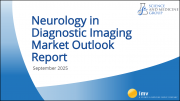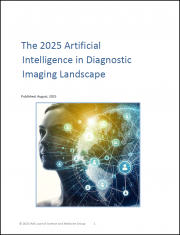
|
시장보고서
상품코드
1625016
세계의 영상 진단 시장 규모 : 제품별, 최종 사용자별, 지역별, 범위 및 예측Global Diagnostic Imaging Market Size By Product (Ultrasound Imaging Systems, X-Ray Imaging Systems), By End User (Hospitals, Diagnostic Imaging Centers), By Geographic Scope And Forecast |
||||||
영상 진단 시장 규모와 예측
영상 시장 규모는 2021년에 261억 달러로 평가되었고, 2022-2030년간 CAGR 5.4%로 성장하여 2030년에는 399억 달러에 달할 것으로 예측되고 있습니다. 각 기술은 질병, 부상, 치료 효과 등 조사 또는 치료 대상의 신체 부위에 대한 다양한 정보를 제공합니다. 이용 확대, 기술의 진보, 보다 좋은 건강 상태나 질병의 진단을 위한 광학 영상 처리의 개선에 대한 요구의 높아짐, 만성 질환의 발생률의 급증 등에 의해 확대하고 있습니다. 시장의 전반적인 평가를 제공합니다. 주요 부문, 동향, 시장 성장 촉진요인, 억제요인, 경쟁 구도, 시장에서 중요한 역할을하는 요인 등을 종합적으로 분석했습니다.
세계 영상 시장 정의
진단과 치료를 위해 신체의 구조를 영상화하는 비 침습적 방법은 진단 또는 의료 영상이라고합니다. 가장 새로운 것은 X선, 공명 영상(MRI), CT(컴퓨터 단층 촬영), 출생 전 진단, 기타 진단 영상법입니다. 검사를 실시하기 위해 영상 진단을 실시합니다. 또한, 치료나 약제에 대한 환자의 신체의 반응을 엄밀하게 모니터하기 위해서도, 이 기술이 채용되고 있습니다.
의사는 골절과 질병의 치료에 대한 환자의 몸의 반응을 평가합니다. 는 신체의 활동이나 구조의 사진을 생성하는 것도 있습니다. 영상 진단 검사가 필요하다고 판단할 수 있습니다. 영상 검사는 강력한 자석, 라디오파, 노트북을 사용하여 체내의 장기나 구조의 상세한 단면 영상을 제공합니다. 스캐너는 긴 튜브와 같으며 중앙에 테이블이 있으며 환자가 미끄러집니다.
영상 스캔은 강력한 자석, 라디오 파 및 컴퓨터를 사용하여 내부 장기 및 구조의 상세한 단면 이미지를 제공합니다. MRI 검사는 CT 검사, X선 검사와 다릅니다. 결과적으로 위험한 방사선을 사용하지 않습니다. 비 침습적 인 장비를 사용하여 육체의 내부를 매우 상세하게 검사합니다.
의료 종사자는 신체의 구조를 조사하기 위해 컴퓨터 단층 촬영, 일반적으로 CT 스캔을 사용합니다. CT 스캔은 X 선과 컴퓨터를 사용하여 신체의 단면 이미지를 형성합니다. 뼈, 근육, 기관, 혈관을 작은 "픽셀"로 촬영하기 위해 의료 종사자는 몸을 상세하게 조사할 수 있습니다. 구식의 X선 장치는 단단하고 빠른 관을 사용해 X선을 선택한 장소에 조사하는 X선 장치입니다. 밀도가 높은 조직은 다른 조직보다 필름의 검은 배경에 흰색 이미지를 제공합니다.
세계 영상 진단 시장 개요
노년 인구 증가가 이 시장을 견인하고 있습니다. 진단 시장 수요가 높아지고 있습니다. 영상 진단의 도입은 정부와 산업계의 지원과 투자에 의해 지원되고 있습니다. 80%가 적어도 하나의 만성 질환을 앓고 있습니다.
게다가 미국 의사회(AMA)는 65세 이상의 노인이 여러 만성 질환을 가진 비율은 최소한 60분에 이를 것으로 예상하고 있습니다. 참신한 치료법의 선택, 처방되는 약물에 대한 수요는 더 커질 것으로 보입니다. 치매 등 노화 관련 질환의 유병률은 질병과 암과 마찬가지로 세계 노인 인구가 증가하고 있기 때문에 상승할 것으로 예측되고 있습니다. 병원, 특히 소규모 병원과 영상 센터의 구매력은 상대적으로 떨어지고 있습니다.
제조 기업도 유행의 영향을 받고 있습니다. 또한 제품과 수리의 납기는 현재의 포장 기준과 국가가 부과하는 반대 프로세스로 인해 방해 받고 있습니다. 공급 체인에 타격을 주고 있습니다 병원은 장래의 COVID-19에 대비해 능력과 자원을 방출해야 했기 때문에 정상적인 처치와 선택적 처치의 빈도가 크게 줄어들었습니다. 장기적으로는 영상 진단 장치 수요를 견인하는 요소에는 거의 변화가 없습니다.
단독의 영상 진단 모드에 관한 일반적인 기술적 제약으로 인해 연구자는 그 입수를 주저하고 시장 확대를 제한하고 있습니다. PET는 공간 분해능이 낮습니다. 조작자는 초음파 장치에 크게 의존하지만 초음파 장치는 신체에 직접 접촉해야 합니다. 조직에 대한 침투 심도에 제한이 있습니다. SPECT는 검출 감도가 낮고, CT는 연부 조직의 콘트라스트가 낮기 때문에 목적질에 관한 정보는 적고, 의사나 환자는 방사선에 피폭됩니다. 영상 기술은 비용이 많이 들고 개발 도상국에서는 장비 가격이 큰 장애물이 될 수 있습니다.
목차
제1장 세계의 영상 진단 시장의 소개
- 시장 개요
- 조사 범위
- 전제조건
제2장 주요 요약
제3장 VERIFIED MARKET RESEARCH의 조사 방법
- 데이터 마이닝
- 밸리데이션
- 1차 자료
- 데이터 소스 일람
제4장 세계의 영상 진단 시장 전망
- 개요
- 시장 역학
- 성장 촉진요인
- 억제요인
- 기회
- Porter's Five Forces 모델
- 밸류체인 분석
제5장 영상 진단 세계 시장 : 제품별
- 개요
- 자기 공명 영상(MRI) 시스템
- 컴퓨터 단층 촬영(CT) 스캐너
- 초음파 영상 진단 장치
- X선 영상 진단 시스템
- 기타
제6장 세계의 영상 진단 시장 : 최종 사용자별
- 개요
- 병원
- 영상 진단센터
제7장 영상 진단 세계 시장 : 지역별
- 개요
- 북미
- 미국
- 캐나다
- 멕시코
- 유럽
- 독일
- 영국
- 프랑스
- 기타 유럽
- 아시아태평양
- 중국
- 일본
- 인도
- 기타 아시아태평양
- 세계 기타 지역
- 라틴아메리카
- 중동 및 아프리카
제8장 세계의 영상 진단 시장 경쟁 구도
- 개요
- 각사 시장 랭킹
- 주요 발전 전략
제9장 기업 프로파일
- Koninklijke Philips NV
- Shimadzu Corporation
- Siemens Group
- Hitachi Medical Systems
- Carestream Health Inc.
- General Electric Company
- Hitachi Ltd.
- Boston Scientific
- EsaoteSpA
- Canon Inc.
- Samsung Medison
- Fujifilm Holding Corporation
제10장 주요 발전
- 제품 출시/개발
- 합병과 인수
- 사업 확대
- 파트너십과 제휴
제11장 부록
- 관련 조사
Diagnostic Imaging Market Size And Forecast
Diagnostic Imaging Market size was valued at USD 26.1 Billion in 2021 and is projected to reach USD 39.9 Billion by 2030, growing at a CAGR of 5.4% from 2022 to 2030. Diagnostic imaging comprises a variety of techniques for seeing the human body to diagnose, monitor, or treat medical disorders. Each type of technology provides various information on the body part being investigated or treated, such as sickness, injury, or the efficacy of medical treatment. The Global Diagnostic Imaging Market is expanding due to an increase in the geriatric population, greater usage of modern medical imaging technology, technological advancements, a rising need for improved optical imaging for better health and disease diagnosis, and a surge in the incidence of chronic disorders. The Global Diagnostic Imaging Market report provides a holistic evaluation of the market. The report offers a comprehensive analysis of key segments, trends, drivers, restraints, competitive landscape, and factors that are playing a substantial role in the market.
Global Diagnostic Imaging Market Definition
Non-invasive methods of making pictures of within body structures for diagnostic and therapeutic reasons look named diagnostic or medical imaging. The most current are X-rays, resonance imaging (MRI), CT (CT), prenatal diagnosis, and different diagnostic imaging methods. Care staff uses diagnostic imaging to create correct diagnoses and examinations. Additionally, the technology is employed to rigorously monitor the patient's body's response to the treatment and drugs. Diagnostic imaging refers to numerous procedures for looking into the body to see the source of a health problem or harm and ensure a designation.
Doctors additionally assess how well a patient's body responds to fracture or illness medical care. Diagnostic imaging permits doctors to see within the body to envision whether or not there are any signs of ill health. Some devices and procedures generate pictures of your body's activities and structures. The doctor can determine that medical imaging tests are needed to support the examined piece and the symptoms. AN imaging scan provides an in-depth cross-sectional image of inner organs and structures employing a powerful magnet, radio waves, and a laptop. The scanner is often within the kind of a long tube with a table within the center wherever the patient will slide.
An imaging scan provides a detailed cross-sectional image of inner organs and structures employing a powerful magnet, radio waves, and a computer. The scanner is commonly within an elongated tube with a table within the center wherever the patient will slide. An MRI scan varies from CT scans and X-rays. As a result, it doesn't use radiation, which may be dangerous. The creation of the imaging scan is a watershed moment in medical history. Doctors, scientists, and researchers will currently use non-invasive instrumentation to examine the within of the flesh in excellent detail.
Medical practitioners use computed tomography to research structures within your body, usually CT scans. A CT scan uses X-rays and computers to form pictures of a crosswise of your body. It takes photos of your bones, muscles, organs, and blood vessels in little "pixels," so care professionals will examine your body in excellent detail. Old X-ray machines are X-ray devices that use a hard and fast tube to direct X-rays to a selected location. X-rays different absorbed in varying amounts by totally different tissues as they pass through the body. Higher-density tissue provides a whiter image on the black background of the film than different tissues.
What's inside a VMR industry report?
Our reports include actionable data and forward-looking analysis that help you craft pitches, create business plans, build presentations and write proposals.
Global Diagnostic Imaging Market Overview
The growing geriatric population has driven the trade. Imaging-based diagnosis has become more common as medical instrumentality has been readily offered. The rising frequency of complicated and chronic diseases has increased the market's demand for diagnostic imaging. Government and sector support and investments have aided the adoption of diagnostic imaging for better diagnosing and treatment. With age, the danger of developing diseases rises correspondingly. In keeping to the Centers for disease control and bar, about 80th of the aged in the United States suffer from at least one chronic condition (CDC).
Furthermore, the American Medical Association (AMA) expects a minimum of 60 minutes for people aged 65 and up to have several chronic conditions. Because the population ages, there'll be a more significant demand for higher care facilities, novel treatment choices, and prescribed drugs. The prevalence of age-related disorders like Alzheimer's disease, brain disease, arthritis, and dementia, similar to disorders and cancer, is foretold to rise because the global geriatric population is growing. The pandemic of COVID-19 has had both positive and harmful effects on the market. The buying power of hospitals, notably small-scale hospitals and imaging centers, is relatively forced.
Manufacturing firms have also been suffering from the pandemic. Moreover, product and repair delivery turnaround times are hindered because of current packaging standards and country-imposed opposition processes. All of those issues hurt diagnostic imaging system production and provide chains. As hospitals were required to release capability and resources for future COVID-19, the frequency of regular and elective procedures decreased significantly. As a result, the pandemic harmed the diagnostic imaging trade. This decline, however, is only probably to possess a short-run negative impact on the trade, with very little or no change within the long-run elemental forces driving diagnostic imaging device demand.
Due to the general technological restrictions related to solitary imaging modalities, researchers are hesitant to get them, limiting their market expansion. For instance, MRI takes longer to scan massive volumes of high-quality pictures; however, PET has a lesser spatial resolution. The operator depends heavily on ultrasound equipment, which needs direct contact with the body and has a restricted tissue penetration depth. SPECT has low detection sensitivity, and CT has poor soft-tissue contrast. Therefore, it provides less info regarding purposeful qualities and exposes doctors and patients to radiation. However, such imaging techniques come at a high cost, and the equipment's price may be a significant hurdle in developing countries.
Global Diagnostic Imaging Market: Segmentation Analysis
The Global Diagnostic Imaging Market is Segmented on the basis of Product, End User, And Geography.
Diagnostic Imaging Market, By Product
- Magnetic Resonance Imaging (MRI) Systems
- Computed Tomography (CT) Scanners
- Ultrasound Imaging Systems
- X-Ray Imaging Systems
- Others
Based on Product, The market is segmented into Magnetic Resonance Imaging (MRI) Systems, Computed Tomography (CT) Scanners, Ultrasound Imaging Systems, X-Ray Imaging Systems, and Others. The X-ray Imaging system category is predicted to increase the most during the forecast period, owing to the rising occurrence of orthopedic injuries and accidents, as well as the growing need for point-of-care testing, which is boosting the sale of portable equipment.
- The CT scanners category accounted for the largest share of the worldwide Diagnostic Imaging Market in 2020. The increasing demand for early and precise diagnosis, as well as the widespread usage of CT scanners by hospitals and diagnostic centers worldwide, can be attributed to the high expansion of this product category. Demand for CT scanners has gradually increased since the onset of the COVID-19 outbreak.
Diagnostic Imaging Market, By End User
- Hospitals
- Diagnostic Imaging Centers
Based on End User, The market is segmented into Hospitals and Diagnostic Imaging Centers. The hospital segment is forecasted to expand during the projected period due to increased awareness regarding health and an increased number of patients with Chronic diseases coming for treatment to the hospital.
Diagnostic Imaging Market, By Geography
- North America
- Europe
- Asia Pacific
- Rest of the world
- On the basis of Geography, The Global Diagnostic Imaging Market is classified into North America, Europe, Asia Pacific, and the Rest of the world. The Diagnostic Imaging Market in the Asia Pacific is predicted to grow at the fastest rate during the forecast period, owing to the growing incidence of chronic illnesses, the increase in the geriatric population, and the increased demand for enhanced imaging technologies. Moreover, an increasing number of local manufacturing units are projected to manufacture lower-priced diagnostic devices, aiding in the region's price-sensitive, underdeveloped market segment.
Key Players
- The "Global Diagnostic Imaging Market" study report will provide valuable insight with an emphasis on the global market including some of the major players such as
- Koninklijke Philips N.V., Shimadzu Corporation, Siemens Group, Hitachi Medical Systems, Carestream Health Inc., General Electric Company, Hitachi Ltd., Boston Scientific, EsaoteSpA, Canon Inc., Boston Scientific, Samsung Medison, and Fujifilm Holdings Corporation.
Our market analysis also entails a section solely dedicated to such major players wherein our analysts provide an insight into the financial statements of all the major players, along with product benchmarking and SWOT analysis. The competitive landscape section also includes key development strategies, market share, and market ranking analysis of the above-mentioned players globally.
Key Developments
- In May 2021, Royal Philips introduced the Spectrum Computed Tomography (CT) 7500, a spectral detector-based CT scanner. This new intelligent technology consistently produces high-quality spectral images for every patient on every scan, helping to enhance disease characterization and reduce rescans and follow-ups while using the same dosage levels as traditional scans.
- In April 2021, the device "single-source Nanox ARC digital X-ray technology" manufactured by NANO-X IMAGING was approved by the US Food and Drug Administration (FDA).
- In May 2020, RADLogics announced that it will be offering software to the nuance AL Marketplace. So, COVID-19 was detected using artificial intelligence-powered medical imaging apps.
- In May 2020, Life Image launched the Patient Connect Portal to give patients control over their longitudinal imaging records and medical data, which they can share with care providers.
- In February 2019, the EPIQ Elite ultrasound system was launched by Koninklijke Philips N.V., the Netherlands, for general imaging and obstetrics and gynecological applications.
TABLE OF CONTENTS
1 INTRODUCTION OF GLOBAL DIAGNOSTIC IMAGING MARKET
- 1.1 Overview of the Market
- 1.2 Scope of Report
- 1.3 Assumptions
2 EXECUTIVE SUMMARY
3 RESEARCH METHODOLOGY OF VERIFIED MARKET RESEARCH
- 3.1 Data Mining
- 3.2 Validation
- 3.3 Primary Interviews
- 3.4 List of Data Sources
4 GLOBAL DIAGNOSTIC IMAGING MARKET OUTLOOK
- 4.1 Overview
- 4.2 Market Dynamics
- 4.2.1 Drivers
- 4.2.2 Restraints
- 4.2.3 Opportunities
- 4.3 Porters Five Force Model
- 4.4 Value Chain Analysis
5 GLOBAL DIAGNOSTIC IMAGING MARKET, BY PRODUCT
- 5.1 Overview
- 5.2 Magnetic Resonance Imaging (MRI) Systems
- 5.3 Computed Tomography (CT) Scanners
- 5.4 Ultrasound Imaging Systems
- 5.5 X-Ray Imaging Systems
- 5.6 Others
6 GLOBAL DIAGNOSTIC IMAGING MARKET, BY END USER
- 6.1 Overview
- 6.2 Hospitals
- 6.3 Diagnostic Imaging Centers
7 GLOBAL DIAGNOSTIC IMAGING MARKET, BY GEOGRAPHY
- 7.1 Overview
- 7.2 North America
- 7.2.1 U.S.
- 7.2.2 Canada
- 7.2.3 Mexico
- 7.3 Europe
- 7.3.1 Germany
- 7.3.2 U.K.
- 7.3.3 France
- 7.3.4 Rest of Europe
- 7.4 Asia Pacific
- 7.4.1 China
- 7.4.2 Japan
- 7.4.3 India
- 7.4.4 Rest of Asia Pacific
- 7.5 Rest of the World
- 7.5.1 Latin America
- 7.5.2 Middle East and Africa
8 GLOBAL DIAGNOSTIC IMAGING MARKET COMPETITIVE LANDSCAPE
- 8.1 Overview
- 8.2 Company Market Ranking
- 8.3 Key Development Strategies
9 COMPANY PROFILES
- 9.1 Koninklijke Philips N.V.
- 9.1.1 Overview
- 9.1.2 Financial Performance
- 9.1.3 Product Outlook
- 9.1.4 Key Developments
- 9.2 Shimadzu Corporation
- 9.2.1 Overview
- 9.2.2 Financial Performance
- 9.2.3 Product Outlook
- 9.2.4 Key Developments
- 9.3 Siemens Group
- 9.3.1 Overview
- 9.3.2 Financial Performance
- 9.3.3 Product Outlook
- 9.3.4 Key Developments
- 9.4 Hitachi Medical Systems
- 9.4.1 Overview
- 9.4.2 Financial Performance
- 9.4.3 Product Outlook
- 9.4.4 Key Developments
- 9.5 Carestream Health Inc.
- 9.5.1 Overview
- 9.5.2 Financial Performance
- 9.5.3 Product Outlook
- 9.5.4 Key Developments
- 9.6 General Electric Company
- 9.6.1 Overview
- 9.6.2 Financial Performance
- 9.6.3 Product Outlook
- 9.6.4 Key Developments
- 9.7 Hitachi Ltd.
- 9.7.1 Overview
- 9.7.2 Financial Performance
- 9.7.3 Product Outlook
- 9.7.4 Key Developments
- 9.8 Boston Scientific
- 9.8.1 Overview
- 9.8.2 Financial Performance
- 9.8.3 Product Outlook
- 9.8.4 Key Developments
- 9.9 EsaoteSpA
- 9.9.1 Overview
- 9.9.2 Financial Performance
- 9.9.3 Product Outlook
- 9.9.4 Key Developments
- 9.10 Canon Inc.
- 9.10.1 Overview
- 9.10.2 Financial Performance
- 9.10.3 Product Outlook
- 9.10.4 Key Developments
- 9.11 Samsung Medison
- 9.11.1 Overview
- 9.11.2 Financial Performance
- 9.11.3 Product Outlook
- 9.11.4 Key Developments
- 9.12 Fujifilm Holding Corporation
- 9.12.1 Overview
- 9.12.2 Financial Performance
- 9.12.3 Product Outlook
- 9.12.4 Key Developments
10 KEY DEVELOPMENTS
- 10.1 Product Launches/Developments
- 10.2 Mergers and Acquisitions
- 10.3 Business Expansions
- 10.4 Partnerships and Collaborations
11 Appendix
- 11.1 Related Research



















